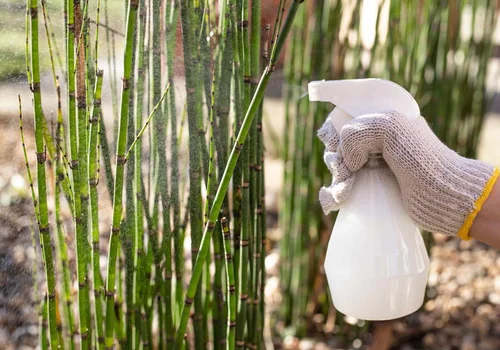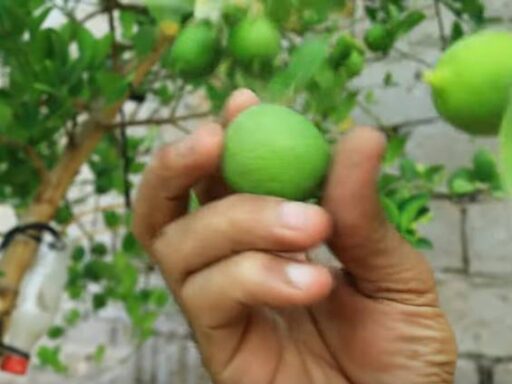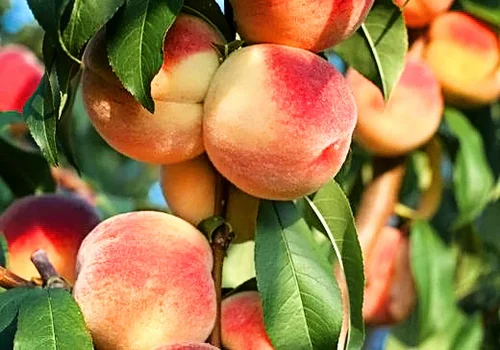One of the biggest challenges we face in the summer is managing soil moisture. Due to the intense heat, the soil tends to dry out daily, requiring us to water our plants at least twice a day—once in the morning and once in the evening. This daily routine can become tedious and time-consuming, especially when delayed watering leads to dryness.
In addition to keeping the soil moist, we must ensure that our plants get the nutrients they need. However, a common problem is that most of the fertilizers we add to the soil drain out through the pot’s drainage holes, preventing the plants from absorbing them effectively. This results in wasted fertilizer and undernourished plants.
To solve these two common gardening problems—maintaining soil moisture and retaining fertilizer—there’s a simple yet highly effective solution: using sponges. This might seem unconventional, but adding sponges to your plant pots can work wonders. Sponges have the unique ability to hold water and fertilizer, allowing the soil to stay moist for a longer period while ensuring the plants gradually absorb nutrients throughout the day.
How Does It Work?
The idea is simple but powerful. By placing small pieces of sponge in the soil, you allow the sponge to absorb water and nutrients when you water the plant. Over time, the sponge releases this moisture and fertilizer back into the soil, helping the plants stay hydrated and nourished without constant watering and fertilizer application.
You can use any type of sponge you have at home, whether it’s an old kitchen sponge or a different type. The sponge doesn’t need to be new or clean because it will be buried in the soil and won’t impact the plant’s health. All you need to do is cut the sponge into small pieces and place them in the pot along with the soil. The sponge will act as a reservoir, soaking up excess water and fertilizer and slowly releasing it over time, keeping the soil damp and nutrient-rich.
Step-by-Step Instructions:
- Prepare Your Pot: Start by choosing the plant pot you want to use. Make sure the pot has drainage holes to allow excess water to escape.
- Layer the Soil and Sponge: Place a thin layer of soil at the bottom of the pot. Then, add pieces of sponge on top of the soil. This will help absorb water and nutrients.
- Plant the Seedling: If you’re transferring a plant from another pot, carefully remove it and place it in the new pot with the sponge. Make sure to create enough space for the roots to spread.
- Add Soil and Water: Cover the sponge and plant roots with more soil, making sure everything is well-settled. Water the plant as usual. The sponge will absorb the water, and the soil will remain moist for longer periods.
Benefits of Using Sponge in Gardening:
- Water Retention: The sponge holds water for an extended period, reducing the need for frequent watering.
- Nutrient Absorption: Sponges trap the fertilizers that would otherwise drain out, giving the plant time to absorb nutrients effectively.
- Less Effort: This method saves time and effort by cutting down on the need for constant watering and fertilizer application.
- Healthier Plants: By keeping the soil moist and nutrient-rich, your plants will grow faster and healthier.
This simple method is especially useful during hot summer months when the soil tends to dry out quickly. Using a sponge can help reduce the frequency of watering, improve nutrient absorption, and promote healthier, faster-growing plants.
Frequently Asked Questions:
- Can I use any type of sponge for this method? Yes, you can use any sponge you have at home, whether it’s a kitchen sponge or another type. The condition of the sponge doesn’t matter as long as it can absorb water.
- How often should I water the plants after using a sponge? You can reduce watering to once a day or even every other day, depending on the climate and the type of plant. The sponge helps retain moisture, reducing the need for frequent watering.
- Will the sponge break down in the soil over time? No, sponges are durable and will remain effective in the soil for a long period. You don’t need to worry about them disintegrating quickly.
- Is it safe to use old sponges in plant pots? Yes, as long as the sponge is not contaminated with harmful chemicals, it’s safe to use old sponges in your plant pots.
- Does the sponge affect the plant’s root growth? The sponge doesn’t hinder root growth; instead, it helps the plant roots access water and nutrients more effectively.
- How long does the sponge retain water and nutrients? The sponge can hold water and nutrients for several hours to a day, depending on the amount of water and fertilizer added.
- Can this method be used for all types of plants? Yes, this method works for most types of plants, especially those that need regular watering and fertilizer.




